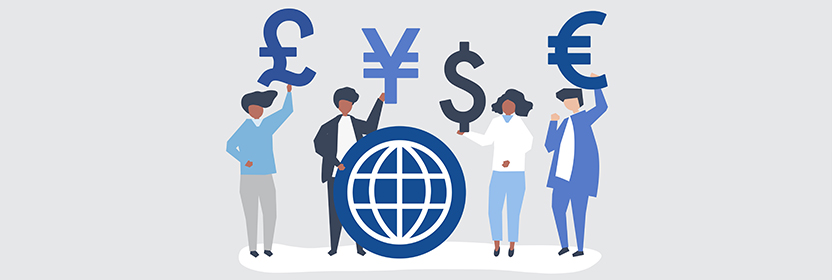How to Solve Currency Conversion Questions in Numerical Reasoning Tests

Ever heard the expression “you can’t compare apples and oranges”? Well the same could be said for currencies. You can’t compare dollars and yen, unless of course you convert the sums properly first. As it turns out, many numerical reasoning tests contain currency conversion questions that ask you to do exactly that.
Below, we’ll discuss why psychometric exams ask currency questions and how job-seekers can best prepare for these screening questions.
What Are Currency Conversion Questions?
If you plan to travel, either for leisure or business, you’re going to find yourself working with other currencies. Whether you’re planning an exotic vacation or flying in for a graduate conference, you’ll need to know how to convert the money you have into the local currency so you can budget for expenses properly. The exchange rate questions on pre-employment aptitude assessments will test to see if you can do just that.
You might also need to convert between currencies if you’re making a purchase online or conducting business with an overseas partner. Investors always make sure to assess the value of the local currency before contributing money to an initiative.

The table above compares different major currencies from countries around the world. Each currency is labelled with the flag of the respective country and the international three-letter abbreviation.
Be careful to read the chart only from left-to-right and not from top-to-bottom. Just start in the left-hand column and read across until you reach the correct column. One bill of the currency in the left-hand column will be worth the number shown of the currency at the top of the respective column. That is to say that 1 USD is equal to 1.3792 AUD and NOT 0.72464 AUD.
How to Solve Currency Conversion Questions?
In order to solve currency conversion problems, you’re going to have to set up proportions relating the exchange rate values presented in the table to the ones you want to determine.
For instance, let’s say I’m travelling from New York to Japan and want to exchange 250 USD into Japanese yen to cover my expenses during my stay. How many Japanese yen will I receive in return for 250 USD?
I’m going to set up a proportion with USD on the top and JPY on the bottom using X for the amount of yen I will receive in return—the sum we want to find.
USD= 1 = 250
JPY 109.526 X
By cross-multiplying, I come up with the following:
X= 27,381.5
In some problems, you’ll have to divide to isolate the variable, but in this question, we get the answer right away. For 250 USD, you’ll receive 27,381.5 JPY.
Which Currency Is Stronger?
We say that one currency is stronger than another if one bill from one currency can purchase more than one bill in another. For instance, if one pound can buy two dollars, we would say the Great British pound is stronger than the United States dollar.
Currency Conversion Tips:
Check out our best currency transformation tips so you’re well prepared when you arrive at the assessment centre!
- Check Twice
Make sure you check the chart twice before solving the question. You don’t want to answer incorrectly just because you entered the wrong information.
- Keep Values Organized
When you set up a proportion, make sure to label carefully. You want to make sure to keep similar values on the same side of the proportion.
- One Step At A Time
Sometimes, you’ll have to complete multiple equations to convert from one currency to the another. If this is the case, make sure to keep each equation separate and organized so you can easily check your work later.
Free Currency Conversion Practice:
Put your skills to the test with the currency exchange questions below!

- According to the chart above, 260 USD is equal to how many Argentine Pesos. Round your answer to two places past the decimal point.
- How many Chinese yuan will I receive for 100 Brazilian Real according to the rates in the chart above? Round your answer to the nearest hundredth.
Answers:
- 56
- 36



